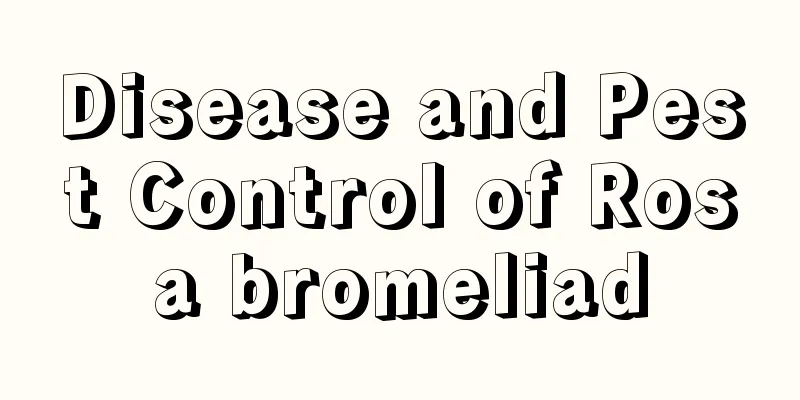Disease and Pest Control of Rosa bromeliad

1. Powdery mildew1. SymptomsWhite mildew spots will grow on the leaves, and large diseased leaves will eventually turn brown. When young leaves are infected, they will turn purple-red and eventually be covered with a layer of white powder. In severe cases, the leaves will gradually wither. 2. ReasonsBecause the bacteria overwinters in the plants, the disease will occur when the temperature rises above 20 degrees, so April to May and September to October are the peak periods of the disease. In other words, the disease of roses is closely related to the temperature. 3. How to preventWe should choose rose varieties that are resistant to powdery mildew for planting. At the same time, we should prune them in winter and remove diseased branches in time to prevent roses from getting sick at the source. 4. NotesTo reduce diseases, proper ventilation and light transmission are required, and less nitrogen fertilizer should be applied. When using medications, pay attention to the safe interval period and do not increase the dosage or shorten the interval period arbitrarily. 2. Pests1. ScarabAnyone who has raised this plant should have seen beetles on the leaves. People who grow it year-round may say that this is a sign of health, meaning that the plant has not been sprayed with pesticides. However, we should know that if a plant has a beetle, it does not matter. But too many insect pests would be a disaster, as beetles like to eat the rhizomes and leaves of roses. It will seriously affect the yield and quality of flowers. Prevention and control methods: You can use lights, willows, etc. to attract beetles and thus reduce their numbers. 2. PterocarpusWhen the plants are older, they will attract the rose moth to a great extent. Generally, rose insect infestations are mainly concentrated in the hot summer, and the most serious period is late summer. The high temperature has a positive effect on the development of the rose moth. The caterpillar moth will eat the leaves, and the plant will not have the tools for photosynthesis and growth, let alone growth. If the leaves get sick during this period, the flower may suffer heavy losses and unfortunately die. Prevention and control methods: Check for insect eggs in time during winter and remove them in time. |
<<: Disease and Pest Control of Clivia miniata
>>: Disease and Pest Control of Emei Rose
Recommend
How to grow dahlias
1. Division propagation Division planting can be ...
Why doesn't the colorful ivy bloom?
1. Insufficient light The reason why the ivy plan...
Several common propagation methods of asparagus fern (what to pay attention to when propagating asparagus fern)
First , asparagus fern cuttings combined with hig...
How to cultivate the rich leaf
Growing conditions of fugui leaves Soil cultivati...
What to do if the leaves of the Chinese Fortune Plant turn yellow and curl
The pineapple flower is what we often call pineap...
How to eat Dendrobium candidum correctly? Can Dendrobium candidum be used to make soup?
1. How to eat correctly 1. Eat directly: Dendrobi...
The main varieties of colorful pineapple
1. Golden-edged colorful pineapple Its leaves are...
Should I use a large or small pot for the succulent winter beauty?
Should I use a large or small pot for the succule...
How to save safflower seeds and how to plant the collected seeds
How to keep safflower seeds Half a month after th...
Is Brazilian wood poisonous?
Is the Brazilian wood poisonous? Not poisonous. T...
How often should I water cosmos?
How often should I water Cosmos? During the seedl...
Do pine trees prefer shade or sun?
Do pine trees prefer shade or sun? Pine trees are...
Where does corn grow? Where does it like to grow?
Corn growth habits Corn, also known as corn, corn...
What is the most effective way to kill trees? What is the best way to kill trees?
Which tree removal medicine is the most effective...
Can lucky bamboo be grown in soil? How to grow it in soil
1. Can lucky bamboo be grown in soil? Lucky bambo...









